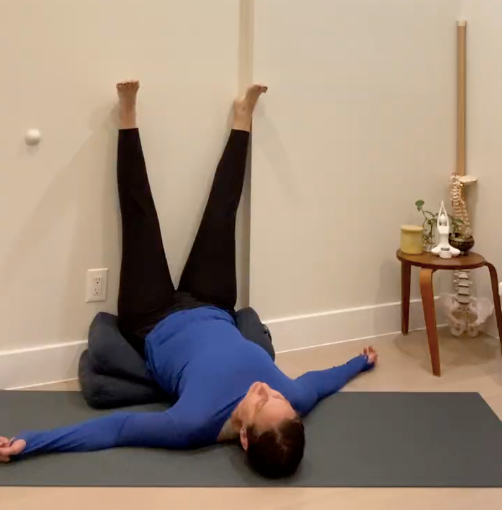Your Beautiful Hips + What You Need to Know About Them
- an6133
- Aug 15
- 3 min read
Updated: Aug 19

I'm betting that you have some strong opinions about your hips, don't you? It's okay, we all do. I teach anatomy to yoga teachers and movement specialists, and when they first are learning about the hip, I have them do a little exercise. I have them close their eyes and ask themselves a simple question: What do my hips mean to me?
Then, I ask them to share whatever came to mind first, without editing themselves. Overwhelmingly, the answers are personal, emotional, sometimes even funny: happy, angry, frustrating, they're so stiff, why??, babies, fear, seat of emotion, mystifying, god dammit. These are all real answers from real students. Very few have ever answered things like: thank you, amazing, generous, powerful, ball and socket, strength, whoa, etc.
Our opinion about our hips is usually strong and deeply personal. We weave into our anatomy the story of our lives and experiences, our hopes and dreams. And it's a perfectly natural thing to do - we are after all living out our lives, intimately with these bodies. And because of where the hips are located - at the centerpoint of our body - and because of what they provide - support, ambulation, connection between upper and lower body -- they have a lot to do and, energetically, they are emotionally provoking. Hence, strong opinions.
In reality, though, with some basic understanding of anatomy, you can learn to appreciate their brilliance and reopen a dialogue with your body that is neutral, supportive and mutually benificial. And while you may still have strong opinions, they won't color your ability to enjoy the truth of how your hips work and how truly magnificent they are.
Before we get started, it's important to understand that when we refer to the hips we're really talking about the Hip (or Pelvic) Girdle, which encompasses 1. the hip joint on the side (where the femur bone meets the pelvic bone,) 2. sacroiliac joint on the back (where the pelvic bone meets the sacrum part of the spine) and 3. the pubic symphosis in the front (where the pubic bones meet.) The sit bones, or ischial tuberosites, at the bottom of the pelvis provide a basis for the pelvic floor. With a left and right side, this creates a Girdle.
Five Things to Know about the Hip/Hip Girdle
1. Ball-and-Socket Freedom with Built-in Stability
The hip joint is a ball-and-socket synovial joint where the femoral head fits into the acetabulum of the pelvis. Unlike the shoulder (also a ball-and-socket), the hip sacrifices some range of motion in exchange for much greater stability, since it bears the weight of the entire upper body. However, there is still an enormous amount of range available to this joint compared to, say, the knee.
2. Three Planes of Motion
The hip can move in all three planes. This makes it one of the most mobile joints in the body, essential for walking, dancing, running, sitting, squatting, stretching, and yoga asana. Think three planes = three dimensions.
Sagittal: flexion and extension (lifting your arm overhead / lowering your arm down)
Frontal: abduction and adduction (taking your arm straight out to the side / bringing it in)
Transverse: internal and external rotation (rolling your shoulder head forward/ rolling it backwards)
3. The Hip Girdle Connects the Spine to the Legs
The pelvis (ilium, ischium, and pubis) forms the hip girdle, linking the axial skeleton to the lower limbs. The hip joint itself connects the femur (thigh bone) to the illium but it's only 1/3 of the equation. The pelvis transfers forces between the upper and lower body, creating a vital base for posture, balance, and locomotion.
4. Muscular Balance Matters
The hip is surrounded by powerful muscle groups—glutes, hip flexors, adductors, deep rotators, and hamstrings. Imbalances (like tight hip flexors or weak glutes) can lead to compensations in the lumbar spine, knees, or even shoulders. Overcompensations can lead to injury.
5. Joint Integrity Depends on Both Structure and Soft Tissue
The depth of the acetabulum, the fibrocartilaginous labrum, and strong ligaments (iliofemoral, pubofemoral, ischiofemoral) give the hip its stability. These structures, combined with muscle support, make the hip a joint of both power and endurance. How well we maintain the strength and flexibility of each group of muscles that provide this support plays a key role in the overall health of the hip and maintaining its mobility.



Comments